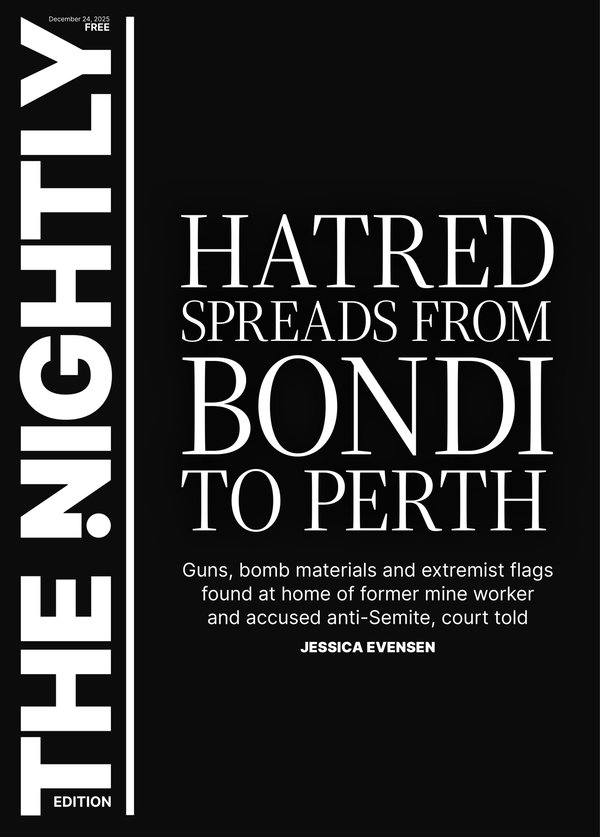Brat green, aka hex #8ACE00: You can’t escape this colour thanks to Charlie XCX

When we look back on 2024, what will we see? Green.
Not just any green, but a hue so affronting that fashion news media has described it as “noxious,” “abrasive” and the colour of “bilious sludge.”
Picture Gumby with jaundice.
Sign up to The Nightly's newsletters.
Get the first look at the digital newspaper, curated daily stories and breaking headlines delivered to your inbox.
By continuing you agree to our Terms and Privacy Policy.Picture a Bottega Veneta handbag, dipped in Nickelodeon slime.
The colour entered the zeitgeist as the branding for “Brat,” an album released in early June by British pop provocateur Charli XCX.
“It had to be really unfriendly and uncool,” the singer has said of the album artwork, which features four blurry letters centred in a puke-green square.
But then a funny thing happened: The intentionally repulsive colour won over the internet, and then the summer, and then, at a pivotal moment, an entire presidential campaign. In a few short days, supporters of Vice President Kamala Harris, who is seeking the Democratic presidential nomination, memed chartreuse into an unusually potent political symbol.
Its ubiquity online makes last summer’s “Barbie” pink look like a lighthearted suggestion.
Charli XCX was once for the young and ironically tattooed; now, she is being distributed to the masses.
In the past week, people who may have never heard of the singer were listening to newscasters on major American cable television networks trying to explain the sudden prevalence of this particular shade.
“I will aspire to be Brat,” Jake Tapper said on CNN to one of his correspondents, who had been holding up a slime-green meme printed on a sheet of paper.
The colour and typography of “Brat” now appear poised to become one of the enduring visual icons of this disorienting moment in pop culture and politics.
If Shepard Fairey’s “Hope” poster of Barack Obama was the lasting design of the 2008 election, the “Brat” album cover may be its 2024 successor: earnest, if slightly muted, red, white and blue, swapped out for a distinctly unpatriotic, uneasy digital green.
“It’s a moment,” said Peter Saville, the designer responsible for the New Order and Joy Division album covers that became signifiers of their era. “You’re talking about a temporary, autonomous moment in pop culture suddenly informing a political campaign, and a major one — a political campaign of global significance.”
What design choices got us here? In the following conversation, which has been edited and condensed, Brent David Freaney, 39, founder of New York City-based studio Special Offer, explained how he and his team created the design oozing its way into the public consciousness — and maybe even the history books.
Q: When “Brat” dropped, I saw a lot of people joking that this must have been the world’s easiest album cover to design. Something tells me that’s not the case.
A: No. We went through a five-month-long design process to get to where we arrived. It was always text, always on a green square. Charli had comped up what she wanted and was like, “This is what I think it should be.” Truthfully, as a designer, I was a little bit like: OK?
The challenge became: How do I take this thing and make it something that is special? It’s a painfully simple cover, obviously, and I think that lends itself to the reason it’s been re-created in so many different ways. As easy or effortless as it may seem on its face, there is a very deeply considered world in it that I think really legitimises it from a design perspective.
Q: Where did you start? The colour?
A: We looked at, like, 500 different shades of green. The directive was: I don’t want this to feel like it has any taste. I want it to feel off-putting and kind of garish. Everything I started seeing in the city that was green, I started taking a photo of.
If it was a sign, a traffic cone, a car, or the background of an image in the New York Post. My boyfriend wants to kill me because I’m taking a photo of every single thing I can possibly find.
Q: How did you make the final call?
A: The final selection really came from an emotional feeling from Charli. It needed to be something that captured the energy of the record that Charli had made, something that felt very irreverent and in your face, with the same retina-burning energy that a saturated red or a saturated orange would have. And it needed to be something that couldn’t really be associated with anything else.
Q: Where did the typography come from? Is it literally Arial?
A: It needed to feel like something that wasn’t precious. There are all these Swiss typefaces, and as a designer, I’m always like, how do you beat Helvetica? We looked at so many different things, and it ended up being a combination, but the base of it is Arial. There’s a stretch to it, to give it a personality.
And it’s kind of awkwardly placed on the cover — it could have been very small and tasteful or very large and loud. To have it not go one way or the other, it’s almost opinionless, which I think is a really important part of the energy behind it.
Q: It’s also blurry. Why?
A: I grew up as a weird, gay kid in Mississippi who had no friends. I spent all of my time on the computer on these early social media networks like Live Journal and Myspace, where I went to engage with people.
The way those platforms used to work is you would get a 100-pixel-by-100-pixel user icon that you could use. So the design of the blur came from designing it at a really small scale and just blowing it up. We did it at 100 pixels by 100 pixels, 72 dpi.
I remember as we were kind of getting into it, being uncomfortable with how unfinished the artwork felt. We have had to tell printers a thousand times, “This is the way it’s supposed to look.” They’re like, “This isn’t right. This isn’t right!”
Q: When did you realize that this was starting to become way more than an album cover?
A: Really it’s been over the last two weeks. For the first week, I was like, is everybody playing a joke on me? Oreo posted about it, and the MTA. My dad saw it on the local news, and he does not listen to Charli XCX. The saturation of the colour everywhere is feeling a little insane.
Q: Did you ever imagine that you’d wind up doing the de facto branding for Kamala Harris’ presidential campaign?
A: Did not see that one coming!
Q: Why do you think it happened?
A: I think that fan culture created and runs the internet. What creates a movement is when there are real people and they are really into something. There must be someone on Kamala’s team who is a Charli stan.
There’s this thing right now where we want to be excited about something, in this insane, dystopian world we’re living in.
Q: Has the campaign reached out to you?
A: Nothing yet.
Q: When we look back on this summer, what kind of energy do you think “Brat” green will come to represent?
A: That is something I’ve been thinking a lot about. There’s an irreverence about summer and this feeling of just going crazy.
I really hope that the legacy of the album, besides Charli XCX’s amazing music, is that it conjures the feeling of freedom. I think the wave of green that has sort of taken over is because it’s a party and it feels wild. This is not millennial pink. The energy behind it is alive.
This article originally appeared in The New York Times.
© 2024 The New York Times Company
Originally published on The New York Times
